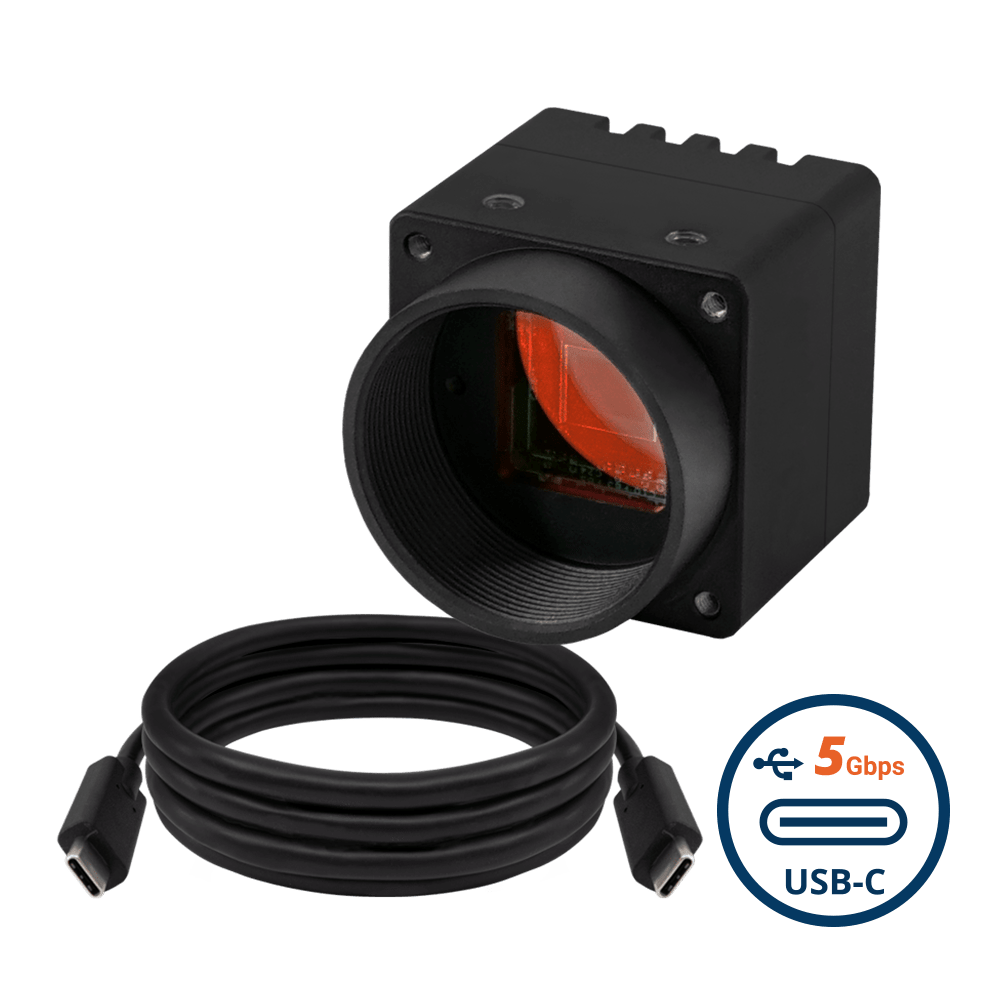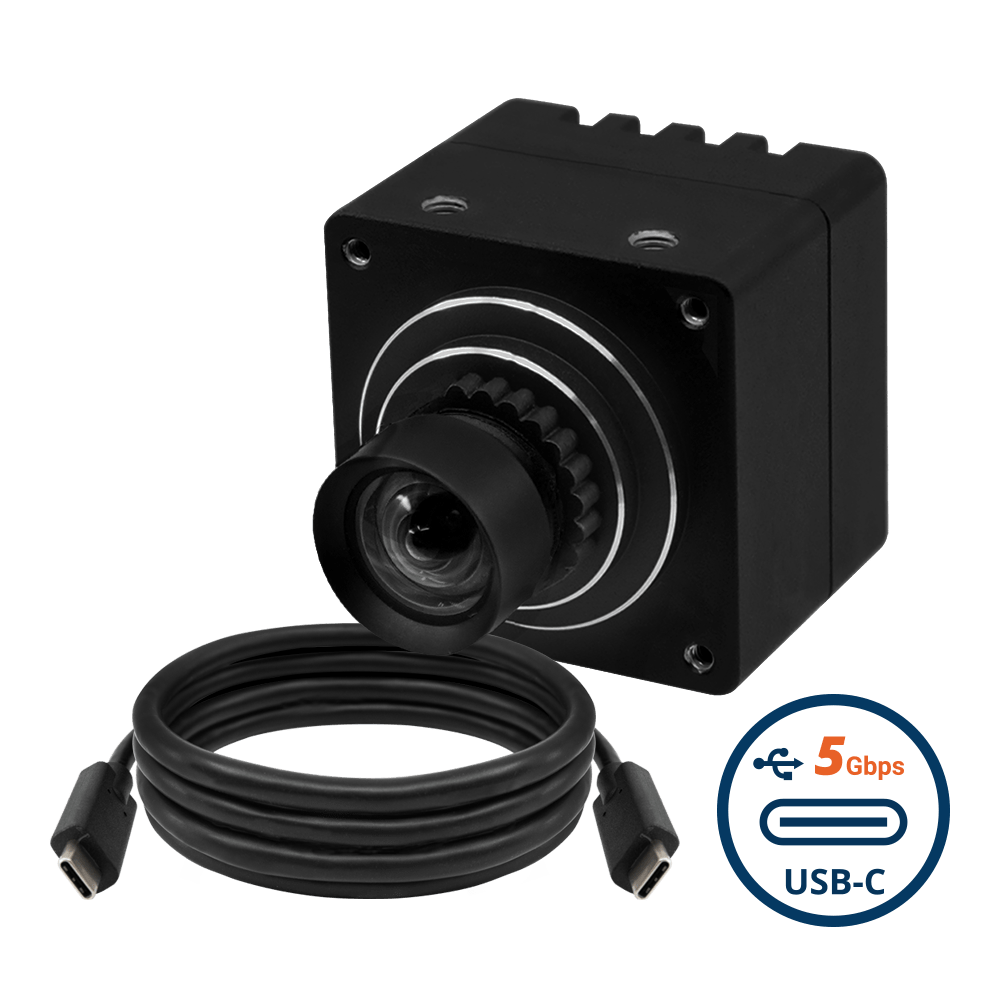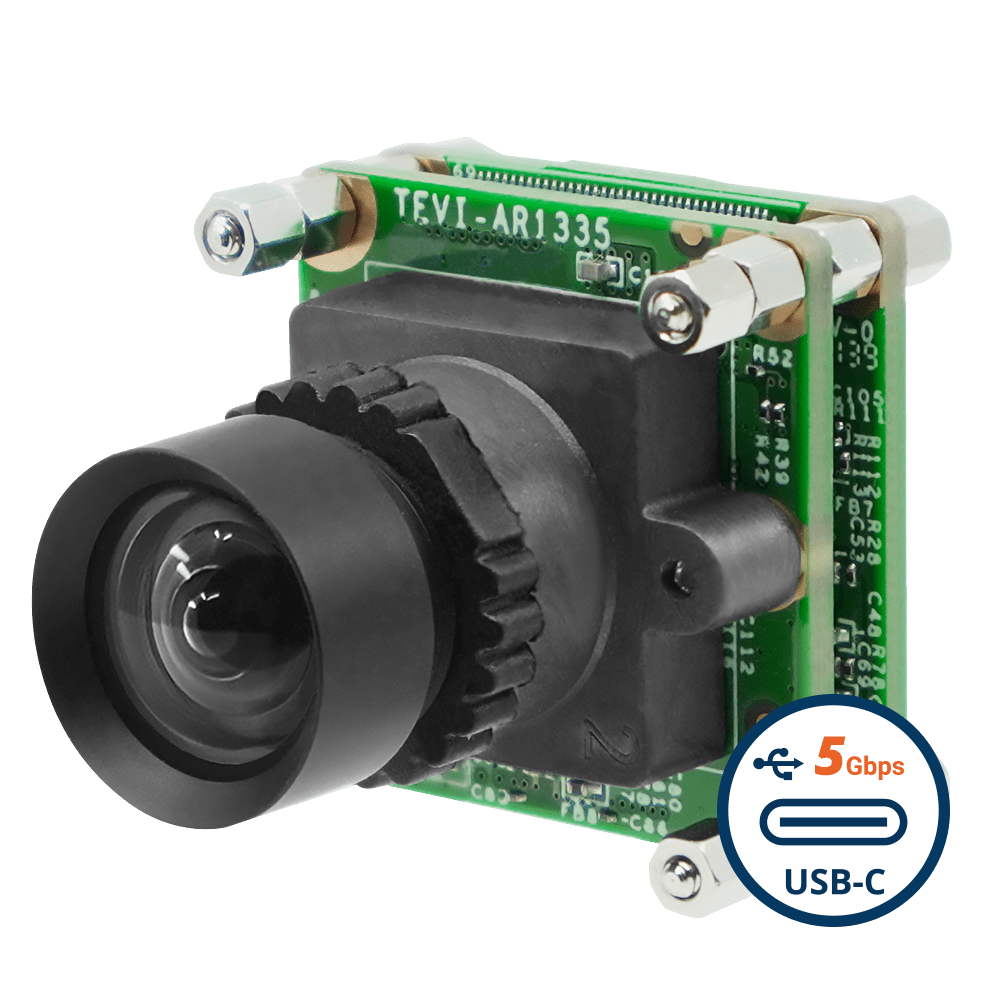
Tracking small laboratory animals like flies and worms is essential for phenotyping, genetics, disease modeling, and drug discovery. Until recently, researchers were limited in their ability to track these animals without sacrificing detail and accuracy owing to reasons such as:
- Limited camera resolution
- Low frame rate
- The inability to track all the wells in multiple multi-well plates simultaneously.
They are now able to overcome this challenge by using a multi-camera array of high-resolution cameras (with a resolution of more than 4K) with overlapping fields of view – covering the entire multi-well plate setup.
In this article, let us discover how high-resolution embedded cameras are enhancing laboratory analysis by helping to image freely behaving animals – thereby maximizing both phenotypic content and experimental throughput.
The Power of High-Resolution Cameras in Animal Tracking
In the world of scientific imaging, resolution and detail are key. In a study published in 2022 by researchers at the Institute of Clinical Sciences, Imperial College London, they used multi-well plates for tracking worms so that the screening would be compatible with existing liquid-handling robots and animal sorting machines. They used 96 wells as a single unit and found out that the setup required a total of 8100 × 5400 pixels, or about 44 megapixels with a 3:2 aspect ratio to cover all the 96 wells.
Since this cannot be met using a single-camera setup (for both resolution and field of view reasons), the best solution to go for is a multi-camera system. Even with multiple cameras, high resolution is necessary in order to capture the necessary details.
Now, the exact resolution to choose will depend on how the experiment setup is done and the level of detail required. In the study mentioned above, the team of researchers used an array of six 12MP cameras to capture the multi-well plate setup.
It is recommended to start at a minimum resolution of 4K and then try with higher resolutions if the necessary needs are not met. This is because as the resolution increases, the cost of the camera also tends to increase. In addition, you also need to factor in the required frame rate. The bandwidth limitations of the system will restrict you from achieving a high frame rate. Usually, with a high-end processing system, a frame rate of about 60 fps is achievable at a resolution of 4K.
But what makes these cameras so special? Let’s delve deeper:
- Detail-capturing capability: With each pixel corresponding to a million dots, these cameras are able to create an image composed of millions of tiny dots. This ensures that nuances and subtle details that may otherwise be missed, such as the slightest behavioral change in animals under observation, will still be documented. The more pixels you have, the more detail you can capture, and the smaller the pixel size, the smaller the size of the animal you can track – ultimately resulting in far greater accuracy and clarity of captured images.
- Bird’s-eye view of multi-well plates: The array setup of embedded cameras offers a comprehensive “bird’s-eye view,” allowing simultaneous tracking of multiple samples in different wells. This ensures synchronized, real-time tracking of the entire area of a multi-well plate setup – even with 5 or more plates. This is possible because with multiple cameras (each having a field of view of say 70 degrees or more), you can capture an extended area without having to go for wide-angle lenses that might lead to vignetting or other aberrations.
- Deciphering minute differences: With high-resolution cameras, even the most minute changes in behaviors can be detected. This is incredibly important for researchers, as small behavioral variations may signify different genetic or environmental conditions. By analyzing these subtle differences with the help of high-resolution cameras, scientists can better analyze the phenotypic content of the subject under study.
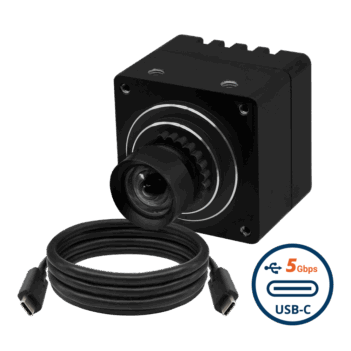
USB3 Type-C Aluminium Enclosed Camera with onsemi AR1335 13MP Rolling Shutter with Onboard ISP and S-mount lens + Incl. 1 Meter USB C Cable
VCI-AR1335-SL
- onsemi AR1335 13MP Rolling Shutter Sensor
- 4K HDR Imaging for Low-Cost Applications
- S-Mount for Interchangeable Lenses
- UVC USB Type-C 5 Gbps Connector
- Plug & Play with Windows & Linux OS
- VizionViewer™ configuration utility
- VizionSDK for custom development
How New-age Embedded Cameras Enable Multi-well Imaging
Apart from resolution, one of the biggest challenges researchers faced in the past for conducting laboratory analysis of small animals is the size of the camera. Embedded cameras earlier were larger in size owing to large sensors and lenses.
In those days, pixels were large in size for the purpose of achieving the desired sensitivity levels. This in turn led to an increase in the size of the sensor. In addition, lenses came in large sizes, which made the overall camera system bulky. However, with modern developments in sensor technology (like the Back Side Illuminated technology) and optics, embedded cameras became more compact while still achieving high resolution.
This made a breakthrough in life science applications such as laboratory research where researchers were able to perform better analyses using compact equipment. In the case of animal tracking using multi-well plates, this offered benefits such as:
- Overall reduction in cost owing to cameras and lenses becoming cheaper.
- Better quality with the ability to capture more data with the use of multiple cameras (a multi-camera setup with a sufficient number of cameras can capture 10+ standard multi-well plates simultaneously).
- Superior sensitivity in the Near InfraRed region – making it possible to capture details of animals that are more visible in the NIR spectrum in comparison to visible light (animal tracking using multi-well plates uses IR LED lights as one of the illumination sources).
- The ability to do large-scale phenotypic screening at high throughput.
This advanced method of imaging allows researchers to precisely detect and analyze each well separately, ensuring no data overlap or loss.
In multi-well plate experiments, the imaging system of the camera array is enhanced with strong blue LED lights. These lights provide greater clarity to visuals while also providing precise and repeatable photostimulation. This addition is especially helpful in differentiating between various wild isolates and model strains, enhancing the visibility of subtle phenotypes that would have gone unnoticed by embedded cameras under regular lighting conditions.
Choosing a Camera for Animal Tracking Using Multi-well Plates
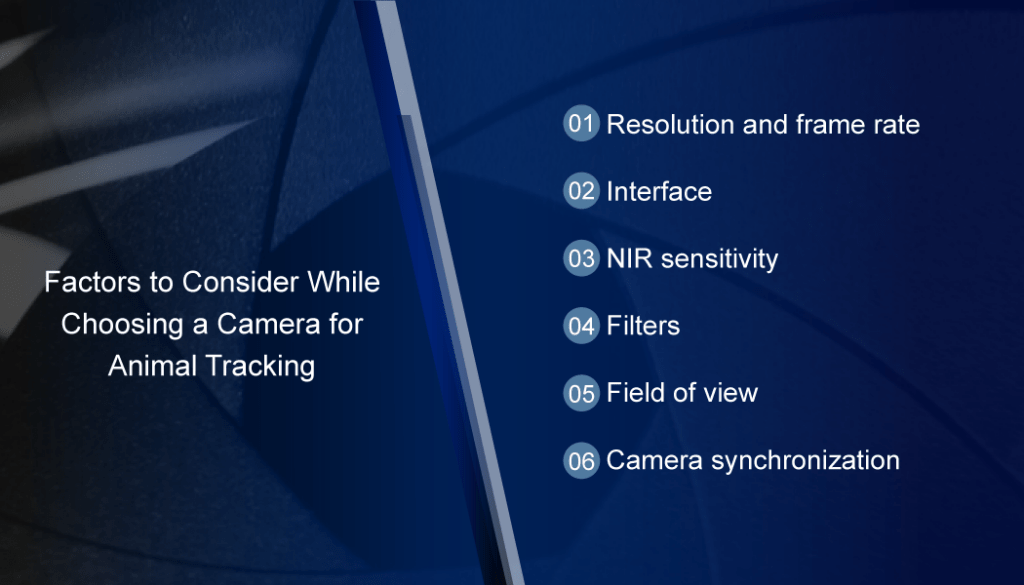
At TechNexion, we help product engineers from a wide variety of industries choose and integrate the right camera solutions into their devices. Given the niche requirements of animal tracking in laboratories, even the slightest variations in camera features can have a significant impact on the output – especially when it comes to behavioral phenotype analysis.
So let’s carefully analyze the key features you need to consider while choosing a camera for an application like this.
- Resolution and frame rate: Today, there are embedded cameras that come with a resolution of more than 20MP. As mentioned earlier, it’s important to find a balance between resolution and frame rate, considering the maximum bandwidth the interface and processor of the vision system can handle.
- Interface: Given that image processing in laboratory applications is mostly done using PCs, USB is an ideal choice when it comes to the camera interface. Practically, it offers a maximum bandwidth of 2 to 3 Gbps – which is sufficient to meet the data transfer requirements of a system built for multi-camera-based animal tracking. One more thing to consider is the distance of transmission. If the equipment is designed in such a way that the distance between the camera and the processor is beyond 2 to 3 meters, consider using an interface like FPD-Link III.
- NIR sensitivity: Animal tracking systems used in laboratories use IR LED lights, which naturally require the camera to be sensitive to the Near IR spectrum. In most cases, IR light of wavelength 850nm is used.Also read: NIR Cameras in Embedded Vision – Advantages and Applications
- Filters: Animal tracking systems use blue LED lights for photostimulation. But you need to make sure that only the IR light reaches the camera sensor. For this, a long pass filter is used on the lens to block the photostimulation light.
- Field of view: Field of view is the most important factor that determines the number of cameras you need to use in an animal tracking system. The placement of the camera also matters since the area a multi-camera setup can cover will depend on the distance from the object to the camera plane. There are also other factors you need to consider (such as lens vignetting for example) when it comes to deciding the number of cameras. We recommend taking the help of a camera expert like TechNexion before you take a call on the number of cameras to be used.
- Camera synchronization: This particular use case of animal tracking might not require synchronized operation of the cameras. As a best practice, researchers record the time and frame number to account for the differences in camera clocks. However, if synchronization is necessary, you can choose between software-based or hardware-based synchronization depending on the need. Hardware synchronization uses external triggers while software synchronization utilizes timestamps or other communication protocols to synchronize the camera data.
Conclusion
Embedded cameras offer multiple advantages to sports authorities and teams. Amateur sports clubs, colleges, and schools that cannot afford to use expensive equipment to broadcast live matches will find a cost-effective solution in embedded vision cameras.
In addition to this, the following are the advantages of using embedded vision in sports analytics:
- Embedded vision systems are convenient to maintain and operate since they do not need any supervision.
- They can do image stitching on-device. This helps to cover the entire field with a limited number of camera installations by creating a panoramic view (this might also require the use of ultra-wide lenses with a large field of view in addition to having large sensors).
- Embedded cameras usually come with a minimum MTBF (Mean Time Between Failure) of 5 years. This means that you could install them and not worry about it for 5 years or more.
- In professional matches, while the expensive camera equipment can be used for broadcasting purposes, specialized embedded cameras can be installed for sports analytics. This offers the ability to optimize both types of cameras for their respective functions.
With these key advantages, the application of embedded vision in sports analytics has grabbed attention in regions such as the US, UK, Europe, and even Asia Pacific.
Related Products
Get a Quote
Fill out the details below and one of our representatives will contact you shortly.

